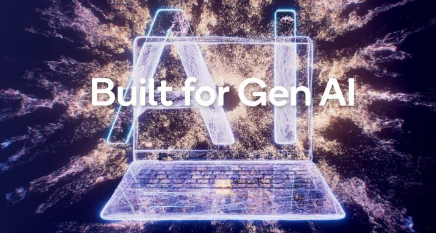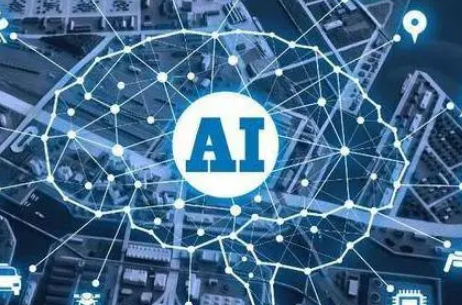AI Reshaping Fab Operations
Chipmakers are adopting artificial intelligence to boost fab operations, an effort that is starting to pay off, according to Micron Technology.
Fab managers need to juggle fluid customer demand while simultaneously implementing constantly changing process technologies in multiple manufacturing sites around the globe. All this happens as chipmakers aim to achieve yield and quality targets on a corporate level as quickly as possible, according to Buddy Nicoson, vice president of wafer fabs with Micron.
During a career spanning more than 30 years, Nicoson has helped manage chip facilities for Samsung, AMD and Cypress Semiconductor. After joining Micron in 2014, he has helped the company launch a first-of-its-kind effort to bring AI technology into fab operations.
“AI was 25 percent faster to get to the yield target desired compared to previously without these applications,” he said this week in a presentation at the Semicon Taiwan show. “It was 35 percent faster to get to the defect per million (DPM) levels desired than it was before.”
Micron, which has fabs in the U.S., Japan, Taiwan and Singapore, has been building teams to learn from each other. If someone learns from big data in Taiwan, "we want that propagated through our network as soon as possible," Nicoson said.
With AI, Micron is shifting fab management from chip facilities to remote control centers.
“You no longer need the people out in the field that you once did,” according to Nicoson. “You get a broader scope of view if you can set up a remote operating center via dashboards.”
Every day, Micron pulls in 5 terabytes of data. The company has 3,000 dashboards of data. The company breaks the work down to workstation groups and workstation teams.
“If you have 13,000 people in your organization, 3,000 is not many dashboards,” according to Nicoson. “We’re trying to translate something very complicated to our folks out there who are working to make a difference. We have to make interface tools that are tangible and that our people can do something with.”
Demand Forecasting
One AI application that shows potential is demand forecasting, which is becoming increasingly difficult for unaided humans, according to Bill Wiseman, a senior partner with management consultancy McKinsey.
“When Apple launches a new iPhone, you better know the best forecast,” he said. “Otherwise, you can’t keep up. If you’re one of the poor souls who has to supply to everyone else besides Apple, who’s going to win? Who do you ship products to? We see tons of overages and write-offs at every point in the value chain.”
Applying machine learning can provide a better idea of how many chips to supply, he said.
Nicoson sounds a similar note.
“Scheduling now is fluid,” he said. “It changes every single minute. If you don’t have schedulers who can adapt to the real-time dynamics of the environment where you are running your factory, you are going to be behind. That can be enhanced through virtualization.”
No More Silos
Visualization is what Nicoson calls “a big deal." Comprehensive visualization can reveal hidden losses and hidden waste.
“If you go out and talk to engineers in the field, one of the frustrations that they have is what I would call siloed views,” he said. “They’ve got to go to one system to look at something, and then they’ve got to go to another system to look at something else. It’s not comprehensive or cohesive.”
Unstructured data can be used to eliminate an existing bias Micron has in its data, he said.
“You end up seeing hidden losses and hidden waste that you could not see before,” according to Nicoson. “Now they become systematic signatures, and you can do something about it.”
Managing Human Resources
Machine learning can also tell management when an employee is going to quit, according to McKinsey’s Bill Wiseman.
“You can watch social networking behavior, how many times employees go to LinkedIn and their email behavior. You can predict employee turnover with an accuracy of about 0.95,” he says.
By anticipating the result, company management can act and “save” employees before they leave. The implication is that there will need to be new communications agreements between management and employees, he said.
Deep Learning
Deep learning is a technology that’s still in its infancy for chipmakers, according to Nicoson. One aim is to use AI to recognize defects on silicon wafers early in the manufacturing process.
“It is very similar to facial recognition,” he said. “There are two sides to this: geometric recognition and photometric recognition. It’s very effective in notifying us about a process.”
The lag in adoption of AI is a bit embarrassing in the semiconductor industry, Nicoson said. The industry is just beginning to combine AI technologies to get value, he noted.
AI will help to bridge new generations of workers with old ones, according to Nicoson.
He gave the example of an employee who worked at Micron for 24 years as a photo operator.
“He’s a very sharp guy who knows everything about photo. We needed to transition him to keep him viable," Nicoson said. "Because of his knowledge and hands-on experience, he became an important mentor to younger generations who understand more about IoT, systems and software but lack the practical applied knowledge.”
在线留言询价

Tech Giants Launch AI Arms Race, Aiming to Spark a Wave of Smartphone and Computer Upgrades

AI Market Ramps Everywhere

AI Still Has Trust Issues
- 一周热料
- 紧缺物料秒杀
| 型号 | 品牌 | 询价 |
|---|---|---|
| RB751G-40T2R | ROHM Semiconductor | |
| TL431ACLPR | Texas Instruments | |
| BD71847AMWV-E2 | ROHM Semiconductor | |
| CDZVT2R20B | ROHM Semiconductor | |
| MC33074DR2G | onsemi |
| 型号 | 品牌 | 抢购 |
|---|---|---|
| IPZ40N04S5L4R8ATMA1 | Infineon Technologies | |
| ESR03EZPJ151 | ROHM Semiconductor | |
| STM32F429IGT6 | STMicroelectronics | |
| BU33JA2MNVX-CTL | ROHM Semiconductor | |
| TPS63050YFFR | Texas Instruments | |
| BP3621 | ROHM Semiconductor |
AMEYA360公众号二维码
识别二维码,即可关注


请输入下方图片中的验证码:























